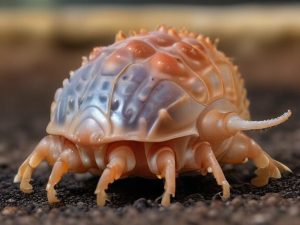Discovering the Wonders of Isopods: A Journey into Nature’s Engineers
Discover the Fascinating World of Isopods
Welcome to the enchanting realm of isopods, where small creatures play an extraordinary role in the ecosystem. These tiny crustaceans, often overlooked, possess remarkable abilities that have intrigued scientists and educators alike. In this comprehensive guide, we delve into the captivating world of a designer rubber ducky isopods, exploring their unique characteristics, ecological significance, and their potential as educational tools to inspire young minds.
Isopods: Nature’s Ingenious Engineers
Isopods, also known as woodlice or pill bugs, belong to the taxonomic order Isopoda. These intriguing creatures are characterized by their segmented bodies, armored exoskeletons, and distinctive ability to roll into a protective ball when threatened. Despite their modest size, isopods exhibit remarkable diversity, with over 10,000 species inhabiting a variety of terrestrial, freshwater, and marine environments worldwide.
Ecological Role of Isopods
Isopods serve as nature’s unsung heroes, playing vital roles in ecosystem dynamics and nutrient cycling. As detritivores, they contribute to the decomposition of organic matter, breaking down decaying plant material and facilitating nutrient release into the soil. Furthermore, isopods are integral to soil aeration and nutrient redistribution, enhancing soil fertility and promoting plant growth.
Adaptations and Survival Strategies
The remarkable adaptability of isopods enables them to thrive in diverse habitats, ranging from forests and grasslands to deserts and coastal areas. Their ability to regulate water loss through specialized structures called uropods allows them to survive in arid environments, while their keen sense of smell aids in locating food sources and avoiding predators.
Isopods in Education: Inspiring Young Minds through Exploration
Hands-On Learning with Isopod Encounters
Introducing isopods into educational settings offers a unique opportunity for students to engage in hands-on learning experiences. By observing isopods in their natural habitat or setting up controlled experiments in the classroom, students can explore fundamental concepts in biology, ecology, and environmental science. From studying behavior and habitat preferences to investigating the effects of environmental factors on isopod populations, these interactive activities foster curiosity and critical thinking skills.
Inspiring Environmental Stewardship
Through interactive lessons and educational projects centered around isopods, educators can instill a sense of environmental stewardship and conservation awareness in young learners. By highlighting the interconnectedness of ecosystems and the importance of biodiversity, students gain a deeper appreciation for the natural world and are empowered to take action to protect it. Isopods serve as ambassadors for biodiversity conservation, inspiring future generations to become advocates for environmental sustainability.
Educate yourself with this related article: Empowering Education and Amplifying Altruism: The Impact of Increasing Female Social Media Followers on Charity and Learning Initiatives
Conclusion: Empowering Education through Isopods
Isopods offer a wealth of educational opportunities, serving as both fascinating subjects of study and invaluable teaching tools. By integrating isopod-based activities into curricula, educators can captivate students’ interest in science and foster a lifelong passion for learning. As we continue to explore the wonders of nature’s engineers, let us embrace the boundless potential of isopods to inspire young minds and cultivate a deeper understanding of the natural world.
